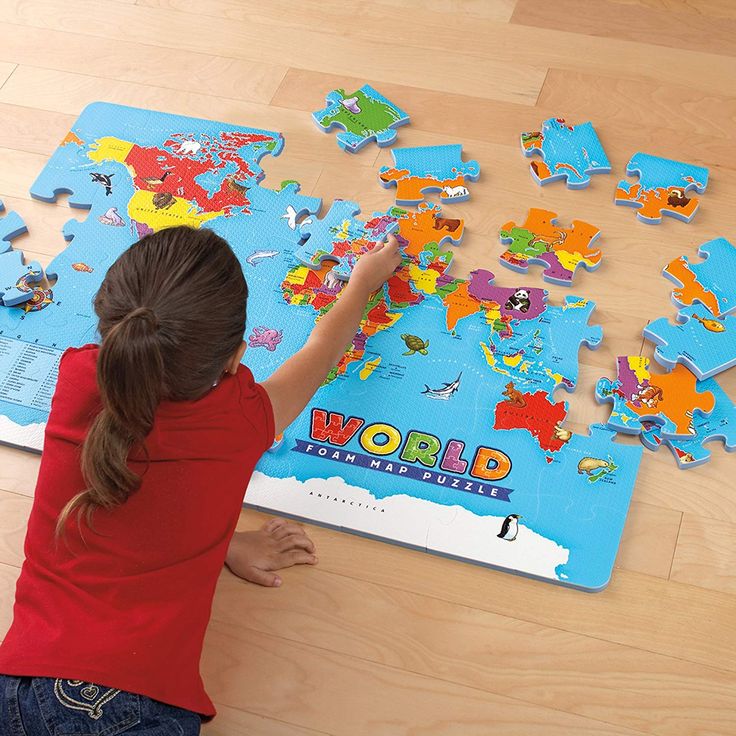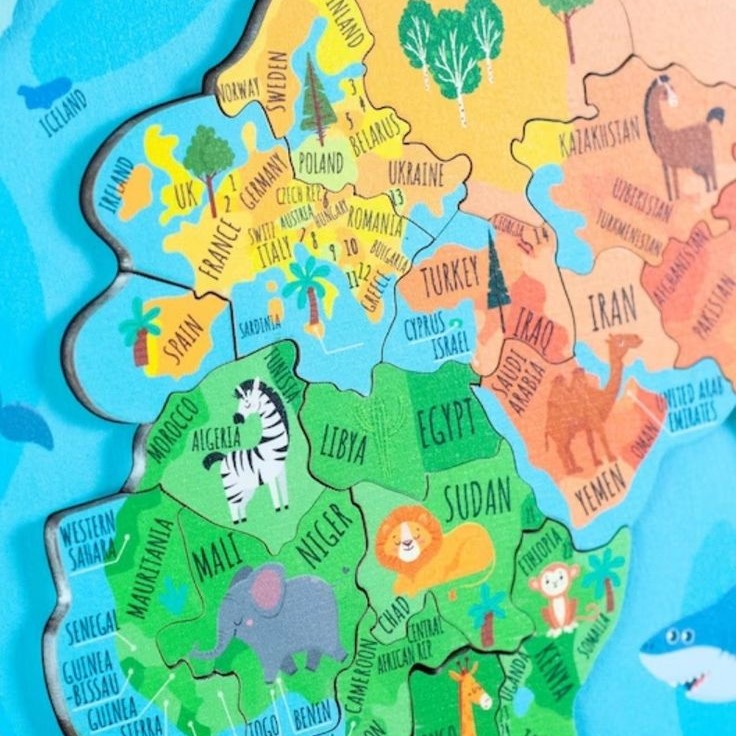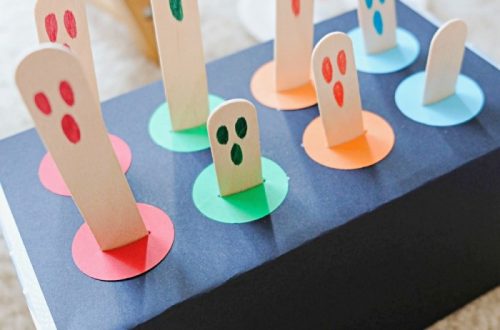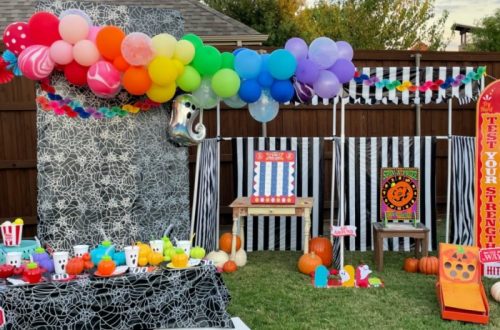Introduction
In an age where knowledge is readily accessible, finding engaging methods to learn about the world around us becomes essential. Geography puzzles offer an exciting and interactive way to explore different lands, cultures, and geographical features. With various types of puzzles available, from jigsaw puzzles to map challenges, these activities provide mental stimulation while enhancing geographical knowledge.
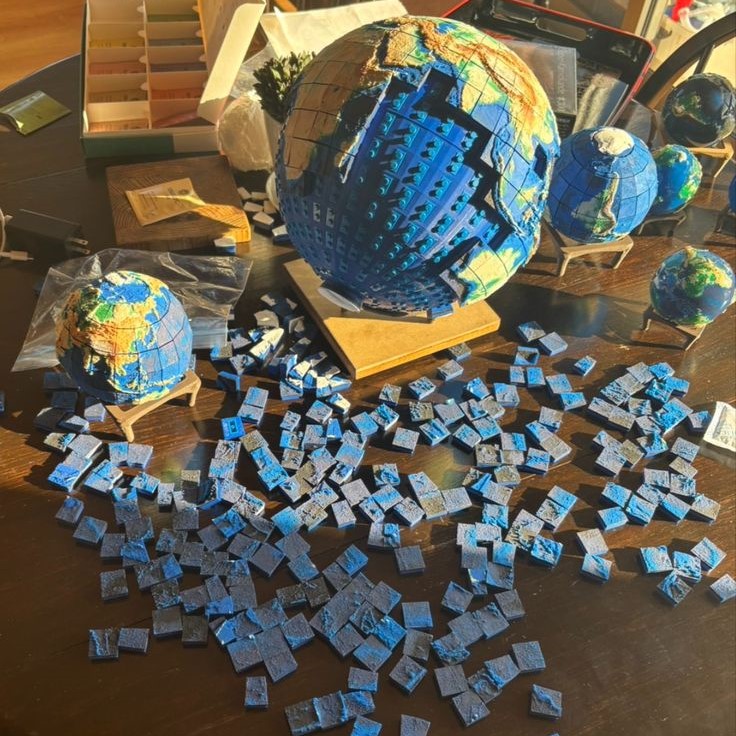
Understanding the importance of geography in our daily lives helps individuals appreciate global diversity, connect with different cultures, and navigate the world effectively. This article will explore the benefits of geography puzzles, discuss popular types, and provide tips for incorporating them into your learning routine. Whether you are a student, parent, educator, or just a trivia enthusiast, geography puzzles can be a valuable tool for expanding your knowledge and exploration.
The Benefits
- Enhancing Learning Through Engagement
One of the primary benefits of geography puzzles is their ability to engage learners. Unlike traditional study methods, puzzles require active participation, which can promote better retention of information. By interacting with geographical concepts in a hands-on manner, individuals tend to develop a deeper understanding of global landscapes. - Improving Cognitive Skills
Geography puzzles also help improve various cognitive skills. These activities require critical thinking, problem-solving, and spatial awareness. Engaging in puzzles that require spatial recognition—like fitting pieces together or identifying locations—can bolster these skills effectively, making them beneficial for learners of all ages. - Encouraging Social Interaction
Geography puzzles can serve as fantastic social tools. They can be enjoyed with family or friends, fostering communication and teamwork. Working collaboratively on a puzzle allows for discussions about geography, culture, and related topics, making the learning experience even richer. - Building Cultural Awareness
Many geography puzzles include cultural landmarks, countries, and significant features that promote cultural awareness. By learning where different places are located, individuals can better appreciate global diversity and understand the connections between people and places. This awareness is essential in our increasingly globalized world.
Popular Types
- Jigsaw Puzzles of Maps
Jigsaw puzzles featuring maps of countries, continents, or specific regions help familiarize learners with the geographical layout of the world. These puzzles often include landmarks, rivers, and mountains, enhancing geographical context while putting together the pieces. - Interactive Online Geography Games
The rise of technology has led to the creation of numerous online geography games and puzzles. These interactive platforms allow users to test their knowledge of geography while engaging in fun, competitive play. They cover a range of topics from capitals to geographical features and are especially popular among younger audiences. - Quiz-Based Geography Puzzles
Quiz-based geography puzzles combine the elements of traditional quizzes with spatial recognition challenges. Players might have to match countries with their capitals or identify where certain geographical features are located on a map. This format promotes both memory recall and geographical knowledge. - 3D Geography Models
For a more tactile experience, 3D geography puzzles are an exciting option. These models allow individuals to build landscapes or cityscapes with various terrains, enhancing spatial awareness and providing insights into topography or architecture.
Tips for Incorporating Geography Puzzles into Learning
- Set a Regular Puzzle Day
Incorporating geography puzzles as a regular activity can help solidify learning. Designate a day each week for puzzle time, whether alone or with family. This scheduling creates anticipation and allows for consistent engagement with geographical concepts. - Mix and Match Types
To keep the experience varied and engaging, mix different types of geography puzzles. Switch between jigsaw puzzles, online quizzes, and 3D models. This approach prevents boredom and ensures a well-rounded understanding of various geographic topics. - Combine with Other Learning Resources
Pair geography puzzles with books, documentaries, or travel videos. This combination reinforces learning by presenting information from multiple sources. For instance, while completing a puzzle of Europe, you could watch a travel documentary that explores each country’s culture and history. - Involve Children in Learning
Make geography puzzles a family activity, particularly if you have young children. Engaging kids in these activities can promote interest in geography and create an enjoyable learning environment. Encourage discussions about what they learn, asking them questions about different locations to reinforce knowledge.
How Geography Puzzles Support Different Learning Styles
Visual Learners
- Engagement Through Colorful Representations
Geography puzzles greatly benefit visual learners by presenting colorful and engaging representations of maps, landmarks, and geographical features. These vivid images help clarify concepts that may otherwise seem abstract. For visual learners, seeing the geography represented in a puzzle format can create meaningful connections to the information being presented. - Concrete Understanding of Geographic Concepts
Visuals transform abstract geographical concepts into something tangible. For example, a puzzle depicting the various states of the U.S. allows learners to see the physical layout and shapes of each state, making it easier to remember regions, borders, and locations. This feature is particularly helpful in recognizing how different locations relate to one another. - Memorization and Recall
The eye-catching colors and designs of geography puzzles aid in memorization and recall. When learners connect a specific color or visual element with a geographical concept, they enhance their ability to remember and retrieve that information later. This type of associative learning is particularly effective for individuals who thrive on visual stimuli. - Interactive Learning Experiences
Engaging with geography puzzles encourages active participation from visual learners. The interactive nature of piecing together a puzzle fosters a dynamic learning environment. As they physically manipulate the pieces, visual learners can better absorb the material and enjoy the process of exploring various geographical aspects.
Kinesthetic Learners
- Hands-On Learning Opportunities
For kinesthetic learners, geography puzzles provide much-needed hands-on activities that cater to their learning style. These individuals learn best through movement and physical engagement. As they assemble puzzle pieces, they actively participate in the learning process, reinforcing their understanding of various geographical themes and concepts. - Manipulating Puzzle Pieces
The act of manipulating puzzle pieces allows kinesthetic learners to engage their motor skills while learning. Each time they connect a piece, they reinforce their comprehension of spatial relationships. This kinesthetic interaction not only aids in learning geography but also develops fine motor skills and hand-eye coordination. - Reinforcing Spatial Relationships
Engaging with physical puzzles lets kinesthetic learners develop a clearer understanding of spatial relationships in geography. They can visualize how different geographical elements fit and connect, fostering a deeper appreciation for how regions and landmarks relate to one another. This understanding is beneficial not just academically but practically, as it reflects how they perceive their environment. - Incorporating Movement into Learning
To further enhance their engagement, kinesthetic learners can incorporate movement into their learning process by discussing the geography they are working on. For instance, standing while working on a large map puzzle allows them to actively engage with the material. This action enhances comprehension, as they tie their physical movements to the geographical concepts being presented.
Auditory Learners
- Enhancing Learning Through Discussion
Auditory learners benefit significantly from engaging in discussions about geography puzzles with family or friends. By verbalizing their thoughts, they reinforce their understanding of the material through auditory processing. They may explain geographical concepts, strategies for completing the puzzle, or even share interesting facts about different regions. - Collaborative Learning Experiences
Talking through strategies together can create a collaborative learning experience. When participants share ideas about how to tackle a geography puzzle, auditory learners absorb information through dialogue. This collaboration fosters a deeper connection to the material, as they engage in conversations that explore the details of the geographic content. - Explaining Concepts Aloud
Encouraging auditory learners to articulate their understanding enhances retention. As they explain concepts related to geography—such as borders, terrain, and landmarks—they reinforce their learning. This method of learning can be especially valuable during cooperative puzzle-solving, where exchanging thoughts solidifies knowledge. - Active Listening and Engagement
Auditory learners thrive on active listening, and discussing geography puzzles with peers allows them to engage fully. Listening to others share their insights or methods also aids in comprehension. This interaction provides a multi-dimensional approach to learning that incorporates verbal skills with observational ones, enriching the educational experience.
All-in-One Learning Environment
- Engaging Multiple Learning Styles
Geography puzzles provide an excellent opportunity to engage multiple learning styles simultaneously. By appealing to visual, kinesthetic, and auditory learners, these activities create a comprehensive educational environment. Everyone can benefit from the combined strengths of the different learning styles present. - Promoting Collaboration and Teamwork
This inclusive approach supports a richer educational experience and promotes collaboration among participants. All learners are encouraged to contribute their strengths, allowing for discussions that merge different perspectives and strategies. This teamwork fosters a sense of community while collectively engaging with the material. - Creating a Supportive Educational Experience
Using geography puzzles in a group setting creates a supportive atmosphere where learners can help each other. Participants can share tips, techniques, and insights, enriching the overall learning experience. Such interactions encourage social skills while providing opportunities for individual growth through teamwork. -
Flexibility in Learning Environments
Geography puzzles can be adapted for different settings, such as homes, classrooms, or community centers. This flexibility allows educators and parents to tailor educational experiences that suit the needs of various learners. By providing options, everyone can engage with the material in a way that resonates with their individual learning preferences.
Conclusion
In conclusion, geography puzzles are an engaging and effective way to learn about the world. They not only enhance knowledge about different lands but also improve cognitive skills and foster connections among individuals. By understanding what kind of water for fish tank suits your aquarium’s ecosystem, you can embody the art of aquarium care, much like you would embrace the enjoyment of geography puzzles.
From jigsaw puzzles to interactive games, a variety of options exist to suit different preferences. Incorporating these puzzles into your routine promotes a fun and engaging approach to learning. So, gather your loved ones, dive into the world of geography puzzles, and explore the exciting landscapes that await you. Embrace the learning experience and watch as your understanding of the world expands, one puzzle piece at a time!

